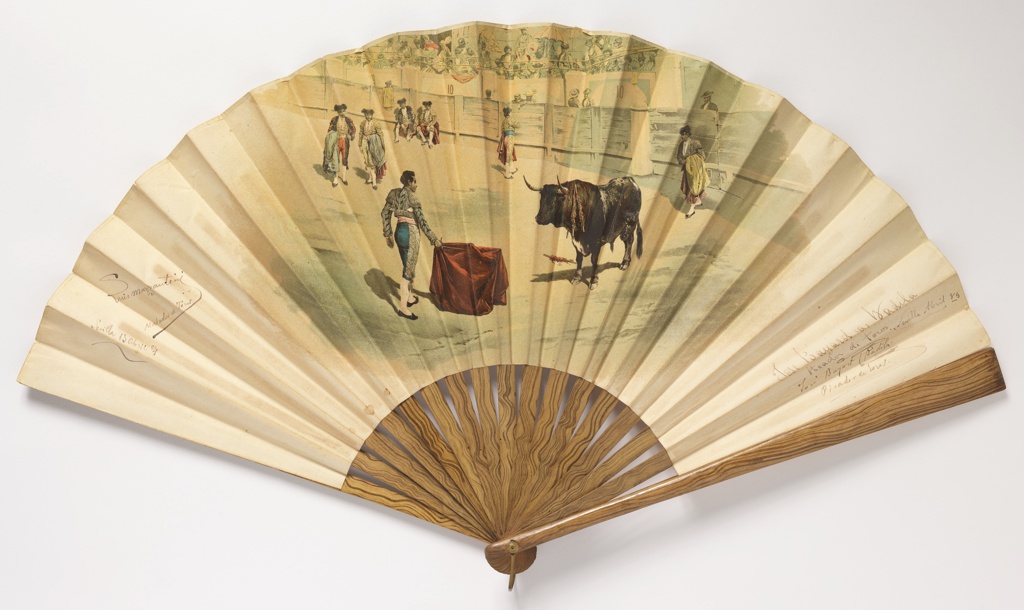Inspired by the popularity of their printed series of fabrics entitled American National Parks (Spring 1927) and Wonder Caves of America (Fall 1927), H.R. Mallinson & Company maintained their creative momentum by returning to other American themes first visited during the “Designed in America” campaigns of the World War I period. Motivation also came from...
This Constructivist-inspired textile likely was produced in the United States during the mid-to-late 1920s. The designer is presently unknown, but presumably was an individual familiar with Russian Constructivist design principles, which took inspiration from the industrial world. Printed in dark yellow and black on creamy off-white silk satin, the textile has an overall design of...
Eleanor Garnier Hewitt (1864–1924) and Sarah Cooper Hewitt (1859–1930) gave identical Spanish pleated fans to the Museum for the Arts & Decoration at Cooper Union. Eleanor donated her fan in 1924 while Sarah’s came later in the form of a bequest in 1931 (acc. no. 1931-6-150). Both fans were signed in Seville on April 13,...
Author: Janice Shapiro Hussain Aptly titled “American Splendor”, this textile captures the quintessential glory of the New England autumn landscape with its fire engine-red barns, rustic wooden fences, billowing clouds, and white church steeples nestled among the distant trees. Burnt orange foliage decorates the sunny and bright rolling pastures, signaling the crisp autumn air. The...
This silk bookmark was made by the workshop of Thomas Stevens to commemorate the 1866 Yorkshire Fine Arts and Industrial Exposition. From the top down, the bookmark shows the coat of arms of the city of York, an image of the pavilion built for the exposition, a portrait of the Mayor of York, James Meek,...
This object was featured in Object of the Day on Feb. 10, 2015, and has been recently updated with new cataloging information. Fillìa was the adopted name of Italian Futurist artist Luigi Colombo (1904–1936). Fillìa’s association with the Futurists began with the second generation that rose to prominence during the 1920s. This next wave of...
Stevengraphs are small woven pictures that depict famous buildings, historical events, iconic scenes, and prominent public figures such as royalty, politicians and athletes. They were produced by Thomas Stevens (English, 1828–1888), a Coventry weaver who customized the jacquard loom to produce small detailed pictures in bright colors. Stevens was compelled to make these innovations after...
Relying on innovative technologies to produce unusual surface textures, Jack Lenor Larsen (American, b. 1927) created Gin Fizz using a heat set process, which ultimately transforms a two-dimensional plane into a three-dimensional pleated surface. In his travels to Japan, Larsen met and befriended one of the most important twentieth century textile designers, Junichi Arai (Japanese,...
On November 21, 1939, Women’s Wear Daily reported on the upcoming launch of a new line of fabrics from the Bol-Inca Group. Under the art direction of Will Chappel, this group of eight fabrics took direct inspiration from a collection of original pre-Columbian fabrics purchased in Bolivia by fashion and accessories designer Alma Norton Duffill...








